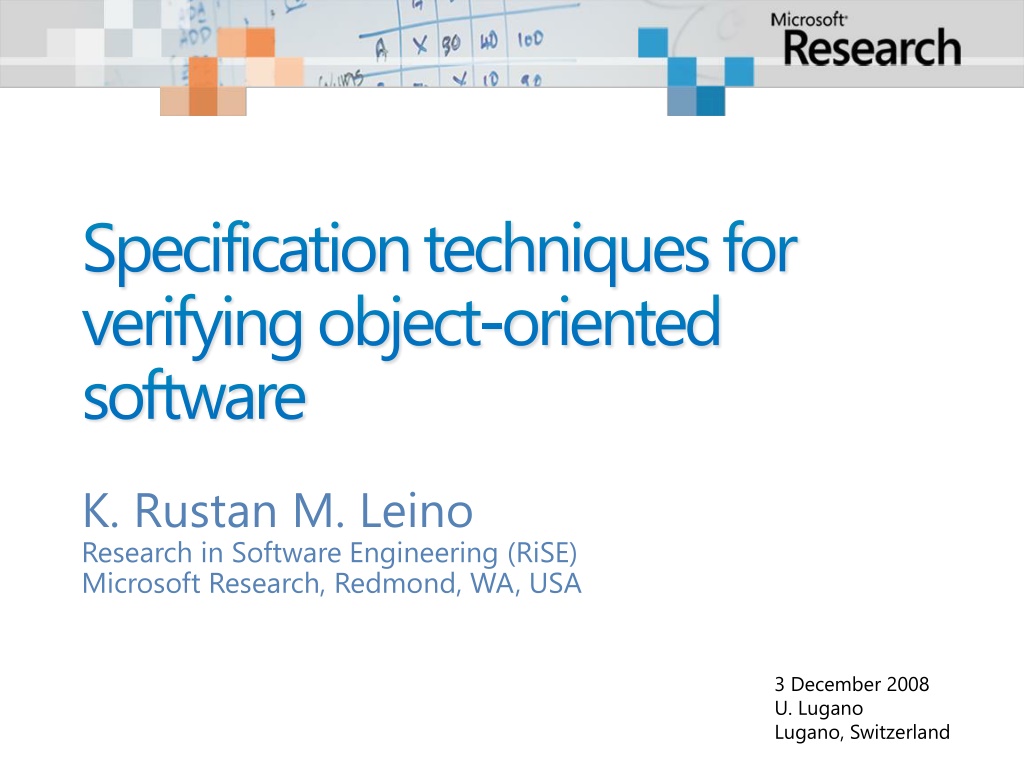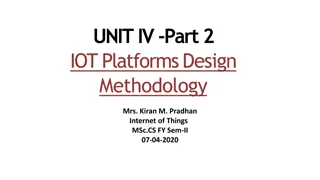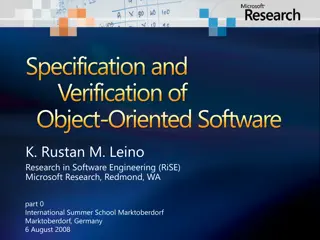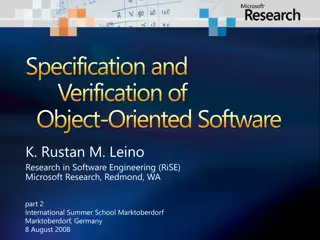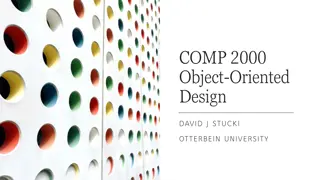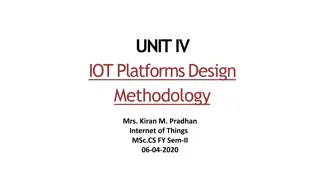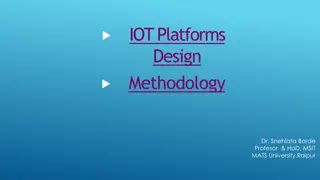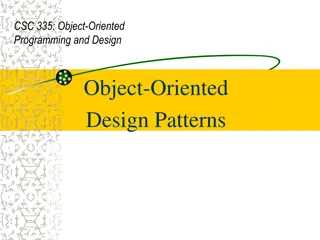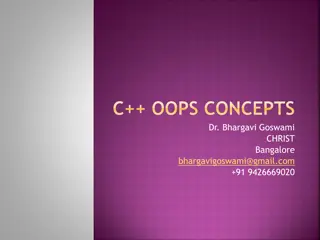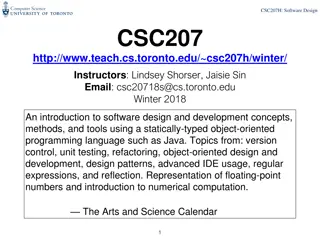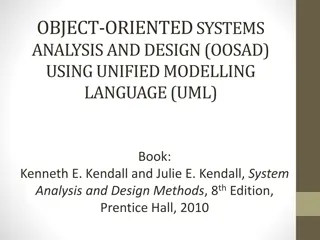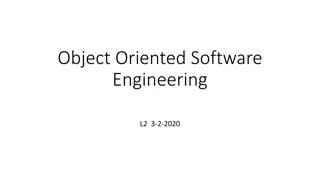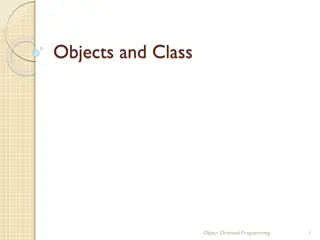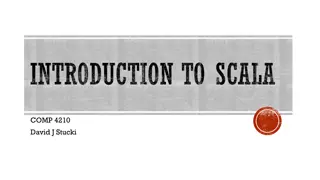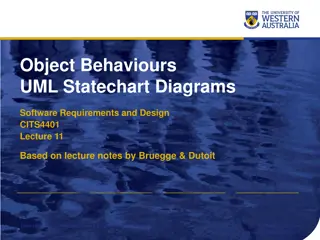Specification Techniques for Verifying Object-Oriented Software
This research discusses specification techniques for verifying object-oriented software, emphasizing the importance of building and maintaining correct programs. It delves into the Verified Software Initiative's vision for reliable computer programs and introduces Spec# programming system, demo, and verifier architecture. Various tools like Boogie and comparison of specification techniques are also explored.
Download Presentation

Please find below an Image/Link to download the presentation.
The content on the website is provided AS IS for your information and personal use only. It may not be sold, licensed, or shared on other websites without obtaining consent from the author. Download presentation by click this link. If you encounter any issues during the download, it is possible that the publisher has removed the file from their server.
E N D
Presentation Transcript
Specification techniques for verifying object-oriented software K. Rustan M. Leino Research in Software Engineering (RiSE) Microsoft Research, Redmond, WA, USA 3 December 2008 U. Lugano Lugano, Switzerland
Collaborators most relevant to this talk Mike Barnett Manuel F hndrich Bart Jacobs Peter M ller Wolfram Schulte Jan Smans Herman Venter Angela Wallenburg
Software engineering problem Problem Building and maintaining programs that are correct Approach Specifications record design decisions bridge intent and code Tools amplify human effort manage details find inconsistencies ensure quality
Verified Software Initiative Hoare, Joshi, Leavens, Misra, Naumann, Shankar, Woodcock, et al. We envision a world in which computer programs are always the most reliable component of any system or device that contains them [Hoare & Misra]
Spec# programming system Spec# language Object-oriented .NET language Superset of C# 2.0, adding: more types (e.g., non-null types) specifications (e.g., pre- and postconditions) Usage rules (methodology) Checking: Static type checking Run-time checking Static verification (optional)
Spec# verifier architecture Spec# Spec# compiler MSIL ( bytecode ) Translator Inference engine Boogie V.C. generator verification condition SMT solver correct or list of errors
Boogie a verification tool bus C with HAVOC specifications C with vcc specifications Spec# Dafny Chalice Boogie Simplify Z3 SMT Lib
Comparison of some specification techniques Spec# Boogie methodology Dafny dynamic frames Chalice implicit dynamic frames (permission model)
Example: Composite object :RockBand invariant: r.songs = r.gt.solos :Guitar
Problem: Invariants don't always hold :RockBand r.gt.solos := r.gt.solos + 1; r.songs := r.songs + 1; invariant: r.songs = r.gt.solos :Guitar
Problem: Overlapping representations :RockBand :RockBand 5 5 6 :Guitar 5 6
Boogie methodology invariant declarations To address that invariants don t always hold: ghost field inv methodology guarantees that ( o o.inv Inv(o)) always holds inv is changed by: expose(o) { } To control overlapping representations: ghost field owner methodology guarantees that ( o o.owner.inv o.inv) always holds rep modifiers indicate ownership intentions
RockBandin Boogie methodology class RockBand { int songs; rep Guitar gt; invariant songs == gt.solos; publicvoid Play() requires inv owner.inv; modifies this.*; { expose (this) { gt.Strum(); songs++; } }
Spec# demo: RockBand public class RockBand { int songs; [Rep] Guitar gt; invariant songs == gt.solos; public void Play() { expose (this) { gt.Strum(); songs++; } }
Dynamic frames [Kassios2006] A dynamic frame is a set of memory locations Functions, which used to decribed invariants, are defined over dynamic frames Methods operate over dynamic frames In Dafny: dynamic frames are usually specified using a programmer-defined ghost field footprint
Dafny demo: RockBand class RockBand { var footprint: set<object>; var songs: int; var gt: Guitar; function Valid(): bool reads {this}, footprint; { this in footprint && gt != null && gt in footprint && gt.footprint <= footprint && !(this in gt.footprint) && gt.Valid() && songs == gt.solos } method Play() requires Valid(); modifies footprint; ensures Valid() && fresh(footprint - old(footprint)); { call gt.Strum(); songs := songs + 1; footprint := footprint + gt.footprint; }
Implicit dynamic frames[Smans et al. 2008] Like in separation logic, define dynamic frames as part of specification predicates acc(o.f) specifies the ability to read/write o.f modifies specifications implicitly follow from accessibility predicates in preconditions
Chalice demo: RockBand class RockBand { var songs: int var gt: Guitar predicate Valid { acc(songs) && acc(gt) && gt != null && gt.Valid && acc(gt.solos) && songs == gt.solos } method Play() requires Valid ensures Valid { call gt.Strum() songs := songs + 1 }
Chalice with -autoMagic class RockBand { var songs: int var gt: Guitar predicate Valid { gt.Valid && songs == gt.solos } method Play() requires Valid ensures Valid { call gt.Strum() songs := songs + 1 }
Comparison: Spec# Spec# (Boogie methodology) specifications are simple, many defaults invariant declarations admissibility restrictions control overlapping representations restrictive
Comparison: Dafny Dafny (dynamic frames) flexible overlapping representations allowed errors reported when they would cause problems simple language design verbose specifications manual updates of footprints
Comparison: Chalice Chalice (permission accounting) flexible overlapping representations allowed these must be specified with partial permissions verbose specifications, but -autoMagic helps thinking through partial permissions is complicated
Conclusions Difficult: designing a programming methodology that fits common programming idioms is easy to use and teach can be handled well by automatic provers invariant declarations come at a price Wanted: better presentation of errors http://research.microsoft.com/specsharp http://research.microsoft.com/rise
